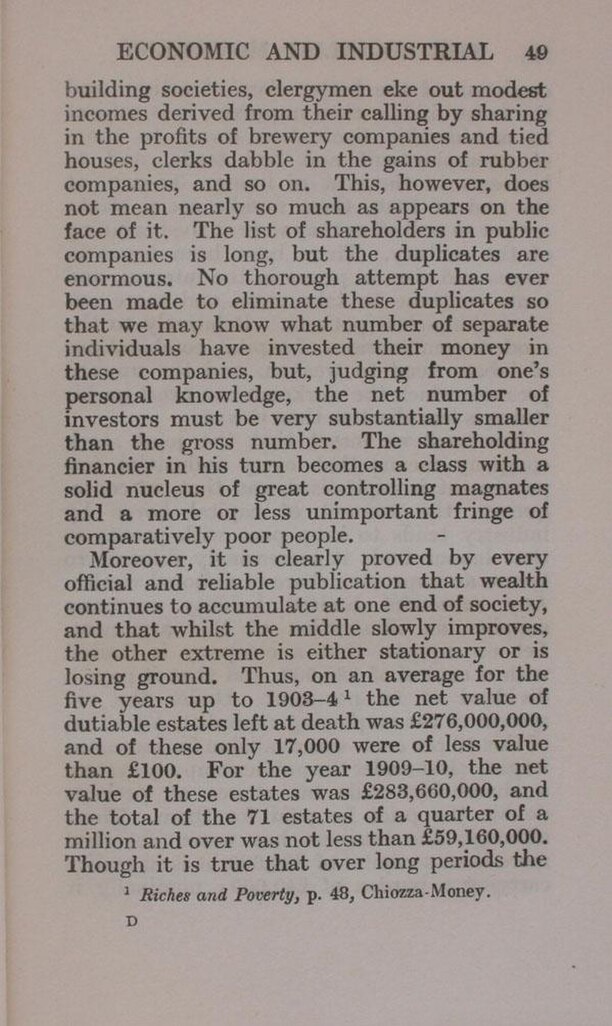building societies, clergymen eke out modest incomes derived from their calling by sharing in the profits of brewery companies and tied houses, clerks dabble in the gains of rubber companies, and so on. This, however, does not mean nearly so much as appears on the face of it. The list of shareholders in public companies is long, but the duplicates are enormous. No thorough attempt has ever been made to eliminate these duplicates so that we may know what number of separate individuals have invested their money in these companies, but, judging from one's personal knowledge, the net number of investors must be very substantially smaller than the gross number. The shareholding financier in his turn becomes a class with a solid nucleus of great controlling magnates and a more or less unimportant fringe of comparatively poor people.
Moreover, it is clearly proved by every official and reliable publication that wealth continues to accumulate at one end of society, and that whilst the middle slowly improves, the other extreme is either stationary or is losing ground. Thus, on an average for the five years up to 1903–4[1] the net value of dutiable estates left at death was £276,000,000, and of these only 17,000 were of less value than £100. For the year 1909–10, the net value of these estates was £283,660,000, and the total of the 71 estates of a quarter of a million and over was not less than £59,160,000. Though it is true that over long periods the
- ↑ Riches and Poverty, p. 48, Chiozza-Money.
